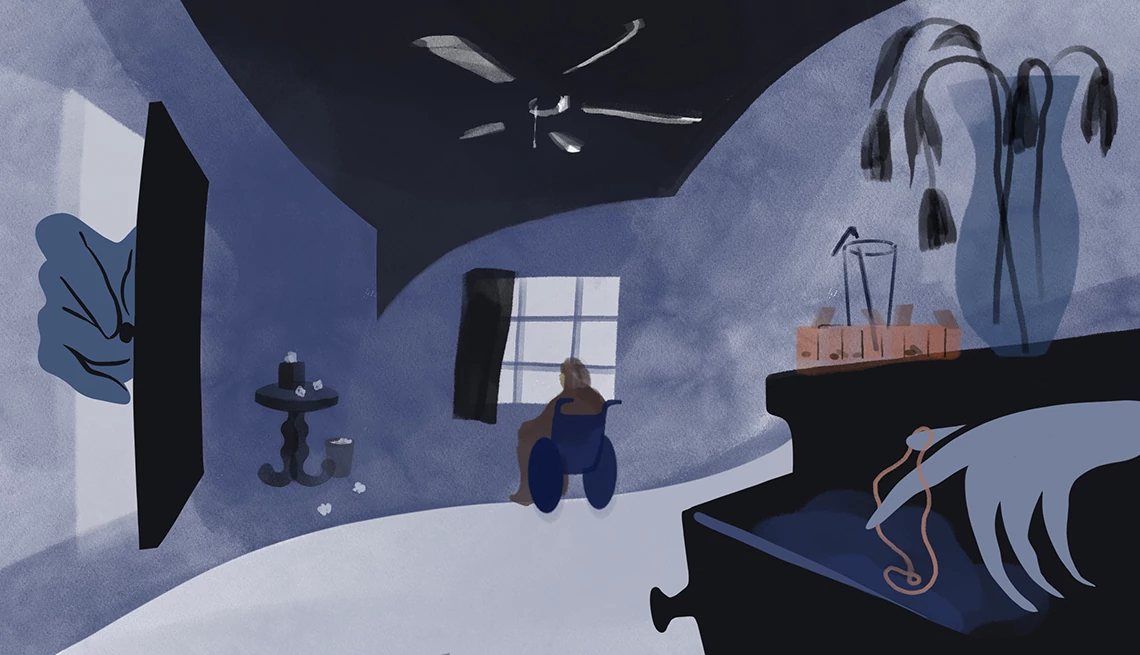AARP Hearing Center


The doors of a Virginia-based nursing home will soon close after federal regulators took the rare step of imposing extreme enforcement actions. Health inspectors documented repeated cases of neglect and lapses in care at Princess Anne Health & Rehabilitation Center in Virginia Beach. In one case, a family member discovered their loved one bleeding heavily from a fall that left them with a severe injury. The investigation also found patients suffered from advanced pressure ulcers, or bedsores, and residents wandered the streets and injured themselves — clear signs of repeated neglect.
While shocking, it’s not rare. Bianca Graham-Bruce, a care manager in Charlotte, North Carolina, played a pivotal role in protecting her client — a woman with mild dementia — from physical abuse in a separate Northern Virginia rehab facility. One day when they were together, Graham-Bruce’s client fidgeted and could barely speak, but after encouraging her to open up, the woman finally shared that a male staff member had restrained her during a visit. Graham-Bruce immediately notified the client’s long-distance daughter and collaborated with the facility and Adult Protective Services to conduct an investigation. The agency ultimately closed the case after relocating the client. Graham-Bruce encourages families to take protective action. “Nursing home residents may not always be able to speak up, but they can always be protected, if someone is willing to listen and act,” she says.
Join Our Fight for Caregivers
Here’s what you can do to support family caregivers:
- Sign up to become part of AARP’s online advocacy network and urge lawmakers to pass legislation to save caregivers time and money.
- Find out more about how we’re fighting for you every day in Congress and across the country.
- AARP is your fierce defender on the issues that matter to people age 50-plus. Become a member or renew your membership today.
In 2023, nursing homes received 94,499 health citations, according to the Centers for Medicare & Medicaid Services, with 8.1 percent of the citations (7,654) related to abuse, neglect or exploitation of residents. Experts believe abuse frequently goes unnoticed and underreported. A 2020 study surveyed 897 older adults during the COVID-19 stay-at-home orders to estimate elder abuse prevalence. Researchers at Yale University found that 21 percent reported abuse, an 84 percent increase from pre-pandemic levels.
Types of abuse and neglect
Elder abuse and neglect are frequently overlooked but can cause devastating harm to residents living in nursing homes. Susan Carson, a registered nurse with more than two decades of forensics experience, emphasizes that elder abuse doesn’t always leave bruises you can see. “Sometimes the wounds are emotional, financial or hidden so that it’s hard to detect.” She says that abuse and neglect can take many forms, including:
- Physical abuse: Inflicting pain or injury on an older adult.
- Confinement: Restraining or isolating an older adult for reasons other than medical necessity.
- Emotional or psychological abuse: Verbal assaults, threats, harassment or intimidation.
- Financial exploitation: Misusing or withholding an older adult’s money, property or other resources.
- Passive neglect: Failing to provide basic needs such as food, medications or medical care.
- Sexual abuse: Any sexual contact — touching, fondling, intercourse or other activity — with an older adult who cannot understand, cannot consent, is threatened or is physically forced.
- Theft: Illegally taking someone’s personal property, such as jewelry, cash, electronics or other valuable possessions without the victim’s knowledge or consent.
“Detecting abuse is complicated by the fact that many older adults are hesitant to speak out due to fear, dependency or cognitive impairment,” says Carson, who has assisted more than 500 victims through evidence collection, injury documentation and courtroom testimony.


































































More From AARP
Hidden Costs in Assisted Living
Explore how to avoid surprise fees in care facilities
The Challenges of Managing My Parents’ Finances
Worried about their financial security, I neglected my own
Update Your Caregiving Plan After Divorce
Don’t let a sudden illness or accident catch you off guard